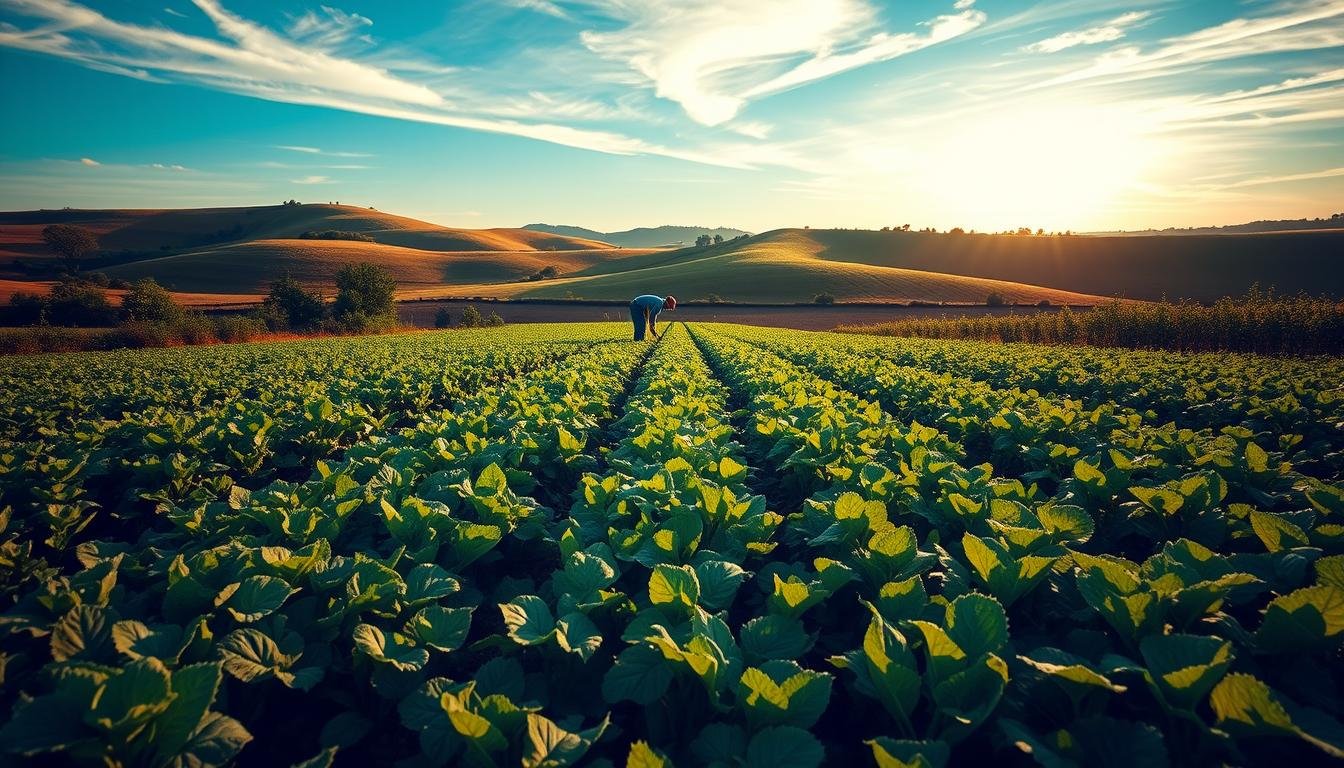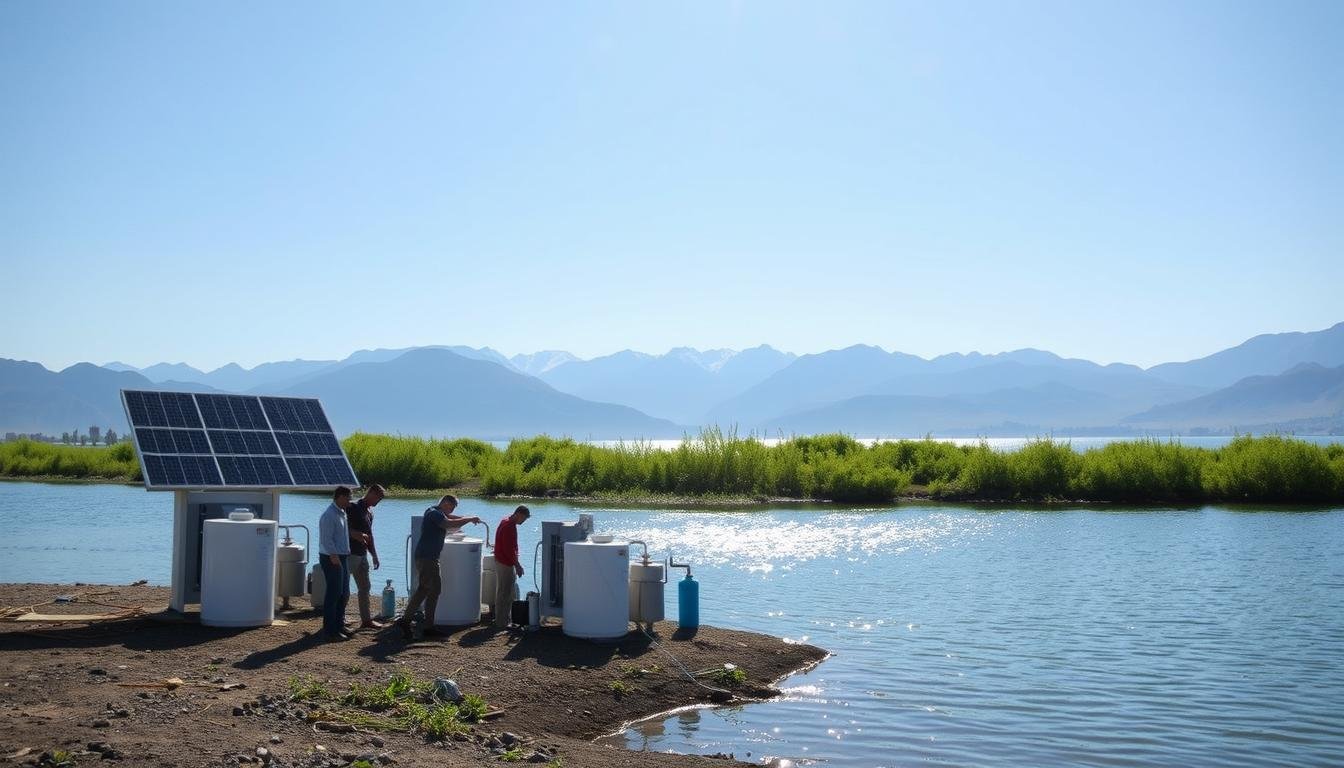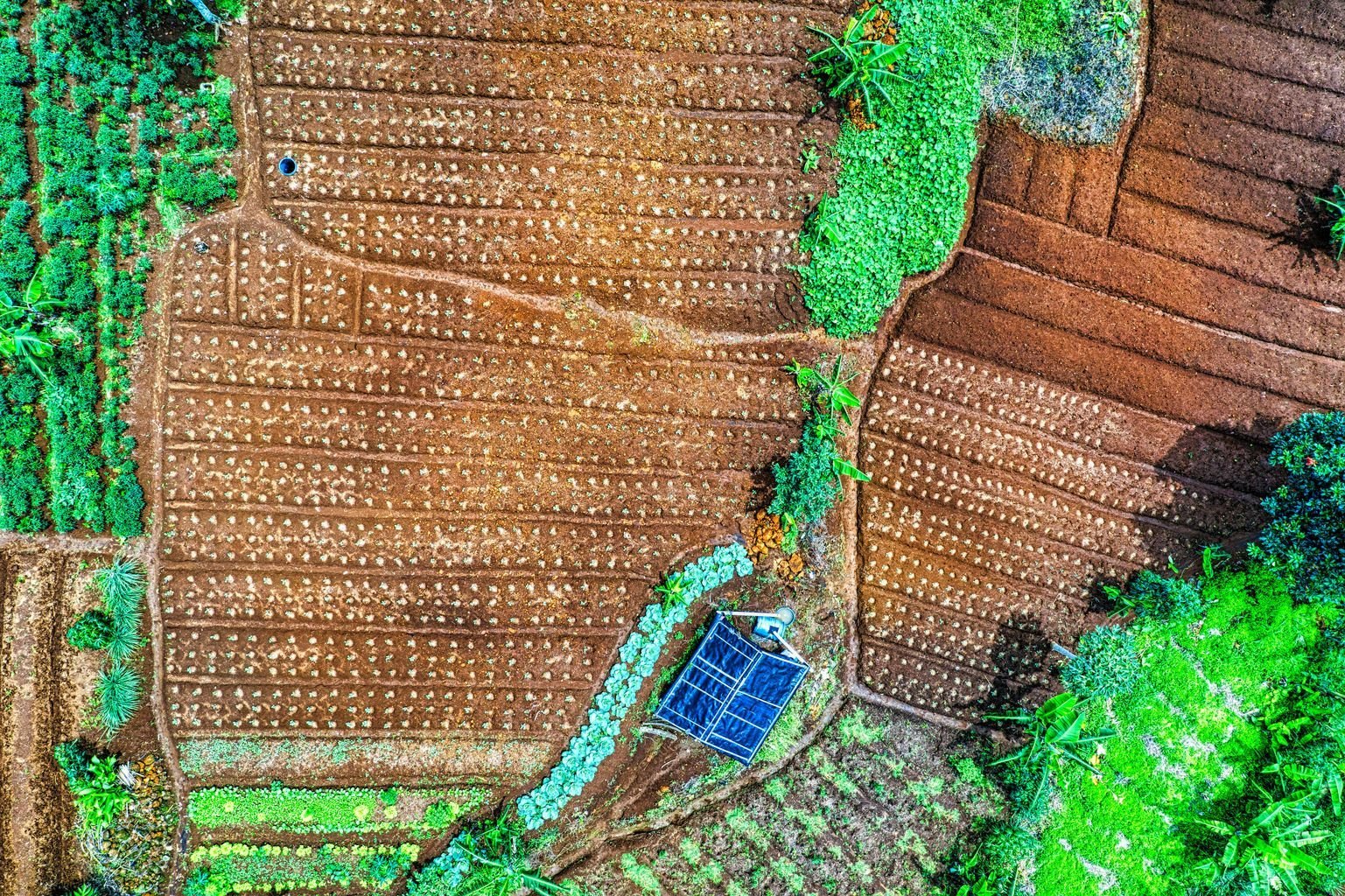Did you know a single teaspoon of healthy land contains more life than Earth’s entire human population? Yet, 33% of global soils are degraded, threatening food security and ecosystems. The urgency to restore and protect our land has never been greater.
Healthy earth teems with biodiversity—from thousands of bacteria to dozens of insect species. Simple farming practices can reverse damage while boosting yields. For example, Indian tea plantations saw a 23% increase in productivity after adopting earthworms and organic fertilizers.
Three proven methods stand out: cover crops, conservation tillage, and crop rotation. These techniques enhance fertility, prevent erosion, and support climate resilience. Let’s explore how they work.
Key Takeaways
- One-third of the world’s land is degraded, risking food supplies.
- Healthy earth hosts countless organisms, improving nutrient cycles.
- Cover crops shield against erosion and add nitrogen naturally.
- Reduced tillage preserves structure and water retention.
- Rotating crops breaks pest cycles and balances soil nutrients.
Why Soil Health Matters for a Sustainable Future
Beneath our feet lies a hidden powerhouse—healthy earth holds the key to climate stability and food security. It stores 2,500 billion tons of carbon, three times more than the atmosphere. When degraded, this carbon escapes as CO₂, fueling climate change.
Peatlands alone trap 30% of land-based carbon. Yet, erosion costs the global economy $8 billion yearly. Lost topsoil means fewer crops, risking livelihoods and ecosystems.
Healthy land also purifies 90% of freshwater. It acts like a sponge, filtering pollutants through layers of microbes and minerals. Without it, water quality plummets.
Pesticides slash biodiversity, causing a 50% drop in grassland birds. Each gram of thriving earth hosts 50,000 species—fungi, bacteria, and insects—that sustain plant growth and nutrient cycles.
Ignoring soil health isn’t an option. It’s the foundation of life, climate resilience, and our future.
What Are Three Sustainable Solutions for Soil?
Healthy soil isn’t just dirt—it’s a living ecosystem that feeds the planet. Farmers and scientists agree: restoring degraded earth requires smart, scalable methods. Here’s how three approaches make a difference.
Cover crops act like nature’s armor. Plants like clover or rye shield bare earth from erosion while roots break up compacted layers. Legumes add 50–150 lbs of nitrogen per acre, cutting fertilizer needs. Over five years, organic matter rises by 1%, storing 20,000 extra gallons of water per acre.
Conservation tillage slashes erosion by 90% compared to traditional plowing. By leaving crop residues intact, soil absorbs 40% more water. USDA studies show no-till farms gain 29% higher profits over a decade. Microbes thrive in undisturbed earth, boosting nutrient cycles.
Crop rotation outsmarts pests and fatigue. Alternating corn with soybeans, for example, disrupts insect breeding and balances soil nutrients. This diversity mimics natural ecosystems, reducing reliance on chemicals.
Beyond these, agroforestry integrates trees into farms, while mycorrhizal fungi form underground networks to nourish plants. Together, these strategies rebuild fertility—one acre at a time.
Cover Crops: Nature’s Blanket for Healthy Soil
Fields dressed in green armor—cover crops shield the earth while feeding it. These plants grow between harvests, protecting against soil erosion and boosting fertility. Unlike synthetic fixes, they work with nature’s rhythms.
How Cover Crops Boost Organic Matter and Nutrients
Roots of clover or rye break up compacted earth, letting water and air penetrate. As they decompose, they add organic matter—up to 1% more over five years. This builds sponge-like soil that holds 20,000 extra gallons of water per acre.
Legumes like cowpeas pull nitrogen from the air, cutting fertilizer use by half. Earthworms thrive, creating tunnels that improve drainage. Studies show fields with cover crops yield 23% more over time.
Top Cover Crops for Different Climates
Not all crops are good for every place. Sudan grass is great for dry areas, reducing wind erosion by 65%. Winter rye, on the other hand, can handle -30°F and stop snowmelt runoff in cold places.
Sunn hemp grows 6 feet tall in just two months in tropical areas. It fights weeds and adds nitrogen. Even in the Philippines, farmers use water hyacinth to fix acidic soils.
Choosing the right plant for your climate is key. It protects and grows your land well. It’s a simple step with big rewards.
Conservation Tillage: Reducing Disturbance, Preserving Life
Farmers around the world are finding that less soil disturbance means better harvests and healthier land. Unlike old-fashioned plowing, conservation tillage keeps the earthworms and microbes happy. It also keeps moisture in, cuts down on erosion, and saves on fuel.
The Science Behind No-Till Farming
Leaving crop residues on fields acts like a natural blanket. It protects soil health from rain and wind while turning into organic matter. Microbes make tunnels that help water soak in up to 40% better.
No-till practices also lock carbon underground. Ohio’s David Brandt saw his profits rise 300% after 40 years of no-till. His fields now hold 35 tons of carbon per acre—like taking 24 cars off the road yearly.
Real-World Success Stories
In Kansas and Zimbabwe, farmers are seeing big benefits. A Kansas wheat grower cut fuel use by 50% with strip-till. In Brazil, soybean yields jumped 25% with permanent raised beds.
Zimbabwean smallholders tripled their maize harvests with basin tillage. These practices show that working with nature saves resources and feeds communities.
Crop Rotation: Diversifying for Resilience
Ancient farmers knew changing crops kept land alive for generations. Native Americans used the “Three Sisters” system, planting corn, beans, and squash together. Corn stalks supported bean vines, while squash leaves shaded the soil, keeping moisture in.
Today, science backs their wisdom. A Minnesota farmer’s 5-year rotation—corn, soy, oats, alfalfa, and hay—cut nematode damage by 90%. This crop rotation naturally breaks pest cycles, reducing synthetic inputs by 40%.
Different plants balance nutrients like a team. Brassicas, like radishes, mobilize phosphorus. Legumes, such as peas, pull nitrogen from the air. Together, they feed the soil without chemicals.
Globally, these methods boost yields. Egyptian cotton farmers grew 18% more by rotating with flax. Their fields needed fewer fertilizers, showing agriculture can be both productive and sustainable.
From ancient fields to modern farms, rotating plant varieties remains a timeless tool for resilient soil.
The Ripple Effects of Sustainable Soil Practices
Healthy soil practices don’t just grow crops; they transform economies and ecosystems. They trap carbon, boost rural incomes, and create waves of positive change.
Combating Climate Change Through Carbon Sequestration
No-till fields and cover crops act as carbon vaults. They store up to 35 tons of CO₂ per acre—like 24 cars’ annual emissions. The 4/1000 Initiative shows even a 0.4% yearly rise in soil carbon could offset global fossil fuel emissions.
Africa’s AFR100 project aims to restore 100 million hectares by 2030. Healthy earth absorbs rain like a sponge, reducing floods and droughts. It’s a natural climate solution hiding in plain sight.
Economic Benefits for Farmers and Communities
Regenerative farming cuts costs and boosts profits. A Nebraska farm saved $87/acre on herbicides with clover cover crops. Productivity also increases, like in Philippine terraced rice farms that employ five times more workers than industrial fields.
Premium markets pay more for sustainable products. Regenerative cotton gets 20% higher prices, and CSAs keep food dollars local. Sustainable farms are 78% more profitable over a decade, showing eco-friendly choices are worth it.
For farmers, healthy soil is more than just dirt. It’s a key to resilience and growth. The benefits extend to future generations.
Overcoming Challenges in Soil Sustainability
Farmers face real challenges in adopting earth-friendly methods. Transitioning to no-till farming takes 3–5 years for soil biology to recover. But, with the right support, these challenges can be overcome.
High upfront costs often stop change. The USDA’s EQIP program helps by covering 75% of cover crop seed costs. In Iowa, small farms saved $50/acre, showing sustainable practices can be affordable.
Education gaps also slow progress. Cornell’s Soil Health Academy has trained 12,000 farmers, teaching methods like buffer strips that cut erosion by 90%. Hands-on workshops turn theory into action.
Affordable tools help bridge the tech divide. The MySoil Test Kit ($29.99) delivers lab-grade nutrient analysis, helping farmers combat degradation without breaking the bank. Precision data guides smarter decisions.
Policy also plays a role. India’s 2023 Soil Health Card Scheme reached 110 million farms, providing tailored advice. Such initiatives show how agriculture can evolve when challenges are met head-on.
Conclusion
Time is running out to protect our planet’s foundation—healthy land. Cover crops shield against erosion, while conservation tillage preserves structure and water. Crop rotation balances nutrients, creating resilient fields.
At current degradation rates, only 60 harvests remain. Start small: planting winter rye post-harvest can kickstart regeneration. Every acre counts.
Globally, these methods could store 13 gigatons of CO₂ yearly—equal to removing all cars. The future of food and climate hinges on restoring soil health now.
FAQ
How do cover crops improve soil health?
Cover crops like clover and rye prevent erosion, boost organic matter, and fix nitrogen. Their roots break up compacted layers while shielding the ground from heavy rain and wind.
What makes conservation tillage sustainable?
Minimizing soil disturbance preserves microbial life, retains moisture, and reduces carbon loss. No-till methods, used by farms like Gabe Brown’s, cut fuel costs and improve water infiltration.
Why is crop rotation critical for resilience?
Alternating crops like corn with legumes disrupts pest cycles and balances nutrients. Diversity mimics natural ecosystems, reducing reliance on synthetic inputs while boosting yields.
Can these practices help fight climate change?
Yes. Healthy soils sequester carbon—up to 1 ton per acre annually with regenerative methods. Projects like Indigo Ag’s Carbon Initiative pay farmers for storing carbon underground.
What’s the biggest barrier to adopting these methods?
Initial costs and knowledge gaps deter some farmers. Programs like USDA’s NRCS offer grants and training to transition from conventional to sustainable systems.







